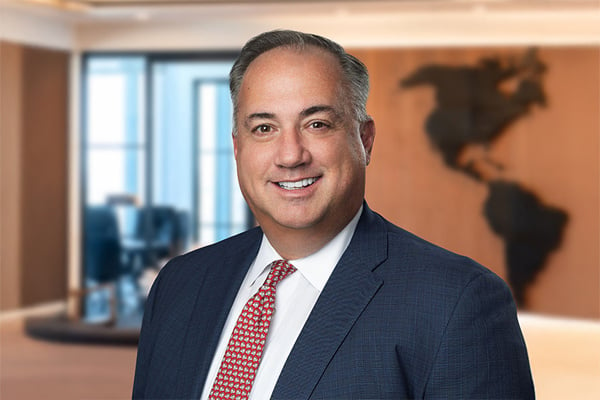Article
Game Changer: New Paycheck Protection Program Rules Give Much Needed Options and Flexibility to Small Businesses
Published: Jun 4, 2020

President Trump is expected to sign a bipartisan bill into law that amends various provisions of the Paycheck Protection Program (“PPP”). The move brings much-needed relief to many small business owners that were beginning to realize that the original framework was unworkable for a variety of reasons. With the changes, small business owners can now breathe a collective sigh of relief, as they now have more options and flexibility for how and when their loan proceeds can be spent, which in turn should help borrowers maximize loan forgiveness. And even if your PPP loan is not 100% forgiven, the new law gives you some additional economic relief so that loan payments do not cripple your efforts to reopen your business.
More Time To Spend Your Loan Proceeds
Old Law: Under the original PPP, the “covered period” was February 15, 2020, through June 30, 2020.
New Law: Now, the covered period is either 24 weeks from the date your loan was funded, or December 31, 2020, whichever date occurs first. Borrowers who prefer to keep their covered period at eight weeks still have the option to do so.
Our Take: Under the original framework, borrowers had only eight weeks to spend their loan proceeds, and some small business owners were finding it challenging to spend 100% of their loan proceeds by the deadline. By extended the eight weeks to up to 24 weeks, borrowers have much greater flexibility and time, which in turn should (in theory) help maximize eligible loan forgiveness. It will allow certain businesses—i.e., those that could not open or could only partially reopen during the phased reopening process—to take advantage of PPP loan proceeds.
Greater Flexibility For How To Use Your Loan
Old Law: Under the original program, at least 75% of the loan had to be used for payroll costs, and only 25% could be used for mortgage interest, rent, and utilities.
New Law: Under the revised framework, business owners can now spend up to 40% of their loan proceeds on mortgage interest, rent, and utilities, and they are only required to spend at least 60% of their loan proceeds on payroll costs.
Our Take: This change, in conjunction with the extension of the covered period, helps small business owners that have disproportionate overhead expenses when compared to others.
For example, one small business owner may own their brick and mortar location outright, so it has no rent or mortgage interest expenses. As such, it may be difficult for that small business owner to spend all of their loan proceeds on payroll expenses and utilities in only eight weeks.
At the opposite end of the spectrum is a small business owner with a sizable mortgage or rent obligation along with a small workforce. Under the original 75/25 PPP framework, this small business owner may have had a hard time spending 100% their loan proceeds in only eight weeks. Now, this small business owner can divert more PPP funds to overhead expenses (up to 40%) over an extended period of time (up to 24 weeks).
In sum, borrowers now have greater flexibility on how and when to spend their loan proceeds.
No penalty for Reductions in FTEs Through No Fault of Your Own
Old Law: The amount of your eligible loan forgiveness would be negatively impacted if your Full-Time Equivalent (FTE) headcount on February 15, 2020, was greater than your FTE at the time of your loan forgiveness application.
New Law: Employers will no longer be penalized with regards to loan forgiveness based on reductions in employee headcount if the employer can provide documentation that it tried unsuccessfully, in good faith, to re-hire an employee that had been previously laid off, and it could not successfully find a suitable replacement for that employee.
Also, employers who can document that they were unable to resume pre-COVID business activity levels—because they had to comply with federal regulations related to sanitation, social distancing, or any other worker or customer safety requirement—will not be penalized if their FTE headcount is at a reduced level when they apply for loan forgiveness.
Our Take: Despite their best efforts, many small business owners are finding it extremely challenging to hire their old employees (or suitable replacements). This is due, in large part, to many workers opting to stay at home and collect unemployment benefits, rather than return to work (and in some cases for lesser pay than the enhanced unemployment benefits that CARES Act provides). This tweak in the law gives honest employers a reprieve from potential reductions in the amount of their eligible loan forgiveness, through no fault of their own.
No Payments Due Until SBA Makes a Decision on Loan Forgiveness
Old Law: Loan payments to your lender were deferred for up to 6 months.
New Law: Loan payments are not due to your lender until SBA has made its preliminary determination regarding the amount of your eligible loan forgiveness. There is one caveat, however: The deadline for submitting your loan forgiveness application to your lender is ten months following the last day of your covered period. If you blow the deadline, you may be required to start making payments on your loan—even if SBA has yet to issue its preliminary decision on loan forgiveness.
Our Take: This is one of the most significant changes to the PPP. Indeed, borrowers can now have peace of mind that no loan payments will be due to their lender unless and until SBA has made a preliminary determination regarding the amount of their eligible loan forgiveness.
Under current guidance, your lender will have 60 days from the date you submit your loan forgiveness application to determine what amount of your loan should be forgiven. Once that determination is made, your lender will then submit its findings to the SBA, who, in turn, has up to 90 days to determine whether it agrees with your lender’s recommendation. Many small business owners were concerned that they would have to start making sizable monthly loan payments per the schedule provided for in the loan documents—well before SBA would have made its forgiveness determination. The revised law fixes this unintended scenario and provides much-needed relief to small business owners who are already strapped for cash in these economically uncertain times.
More Time to Repay Your Loan
Old Law: Any amount of your loan that was not forgiven had to be repaid within two years.
New Law: Borrowers can now have up to 5 years to repay their loan. For those borrowers that have already signed their loan documents, the new law allows you to renegotiate the term of the loan with your lender from 2 years to up to 5 years. In other words, existing loans are not automatically going to be converted to 5-year loans; instead, you will need to work with your lender to make any desired changes.
Our Take: This change should also bring some much-needed peace of mind to borrowers. By extending the time to repay the loan, borrowers who are concerned about not achieving loan forgiveness will free up much needed monthly cash flow. By way of example, if a borrower is required to repay $100,000 of their loan proceeds due to ineligible forgiveness under the original law, their payments (subject to what the specific loan documents provide and how the loan is structured) would be approximately $4,200 per month spread out over two years. This Congressional relief will reduce that payment to only $1,700 per month – a reduction of 250% per month. In these economically uncertain times, monthly cash flow will be a significant concern for many businesses, and extending the time to repay PPP loans will provide some much-needed relief in that regard.
Our COVID-19 Task Force is monitoring this and other significant developments at the local, state, and federal levels. We will continue to update you, so be on the look-out for future alerts. In the meantime, stay safe as you reopen your businesses.


